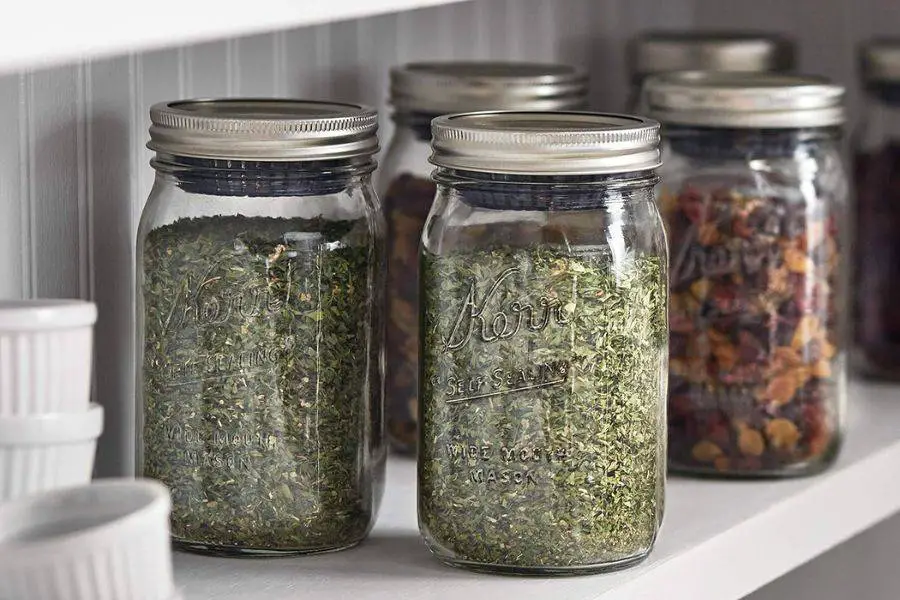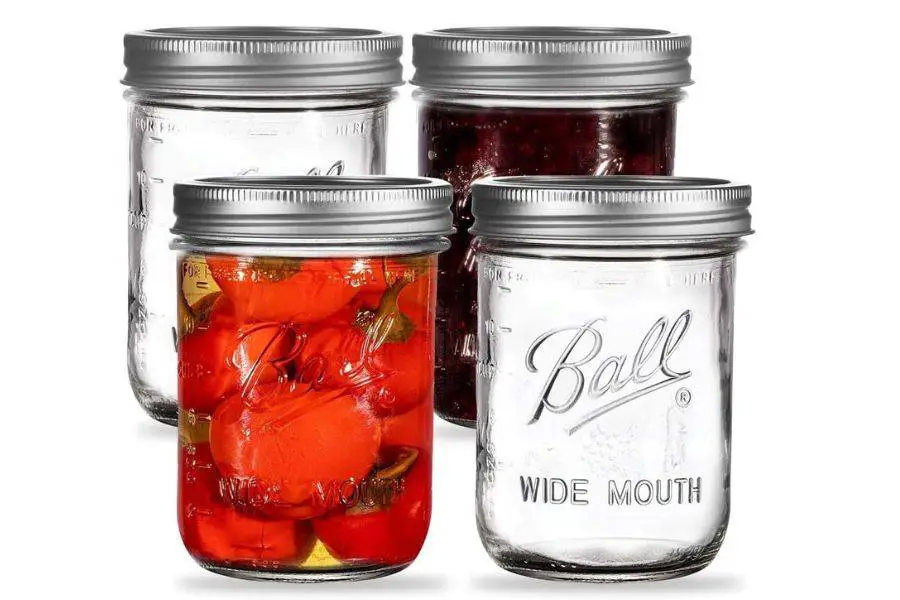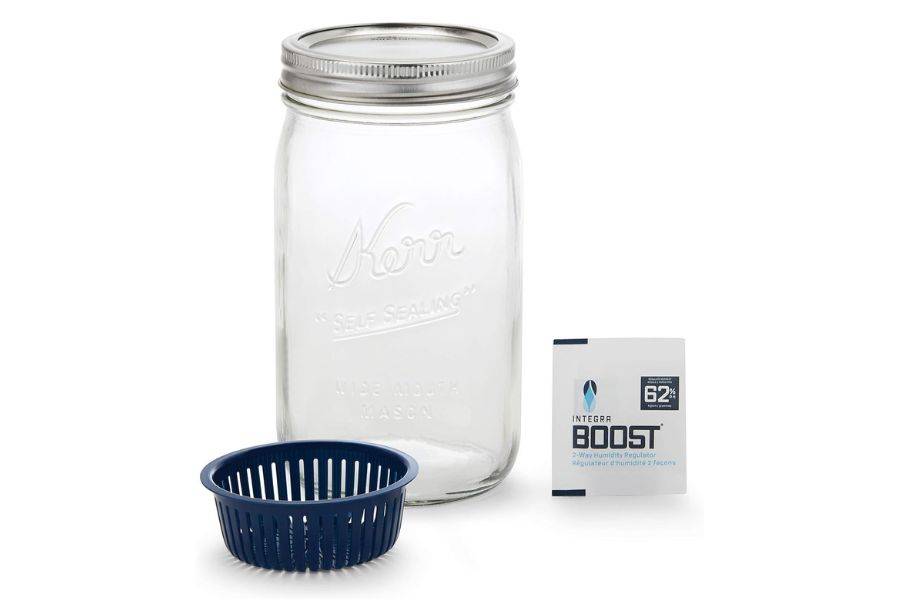Table of Contents
In the world of home preservation and canning, two names stand out for their quality, reliability, and tradition: Ball and Kerr mason jars.

Both brands have cultivated a loyal following among home canners, each offering unique benefits to those preserving their harvests.
This comprehensive comparison will explore Ball and Kerr mason jars across various criteria, from their history and product range to quality, usability, and sustainability, aiming to assist consumers in making informed decisions that suit their canning needs.
History and Brand Legacy
Origins and Development
Ball Mason Jars trace their origins back to 1880 when the Ball Brothers Glass Manufacturing Company began producing glass jars for home canning.
Their innovation and commitment to quality quickly positioned them as leaders in the industry.
Kerr, on the other hand, entered the scene in 1903 with the introduction of a two-piece lid that revolutionized home canning, making the process safer and more reliable.
Over the decades, both brands have evolved, adapting to new technologies and consumer needs while remaining staples in the home canning community.
Market Presence and Reputation
Today, Ball and Kerr enjoy a robust market presence and reputation as trusted names in home canning.
Ball is often celebrated for its wide availability and as a symbol of home canning itself, featured in numerous recipes and guides.
Kerr maintains a strong reputation, particularly in regions where it was historically more available, and is equally recognized for its quality and reliability.
Both brands are now owned by the Newell Brands corporation, further intertwining their legacies while maintaining their unique identities.
Product Range and Availability
Types of Jars Offered
Both Ball and Kerr offer an extensive range of mason jars, catering to various needs and preferences.
Ball boasts a wide selection, including their iconic regular mouth jars for jams and jellies and wide mouth jars ideal for pickles and larger fruits.
Kerr offers a similar assortment, with particular emphasis on their wide mouth jars, which many find easier to fill and clean.
Both brands also provide decorative jars suited for gifts and crafts, highlighting their versatility beyond traditional canning.
Global Availability
While both brands are widely available in the United States, their international availability can vary.
Ball jars tend to have a broader global distribution, found in many countries outside of North America.
Kerr jars, while also internationally available, might be less commonly found in certain regions. This difference in availability can influence consumer choice depending on geographical location.
Quality and Durability
Material Composition
Ball and Kerr mason jars are made from high-quality tempered glass, designed to withstand the high temperatures of canning.
Both brands use BPA-free lids, ensuring food safety and quality.
The glass composition of both brands’ jars provides excellent resistance to cracking and breakage during normal use, reflecting their commitment to durability.
Longevity and Reusability
Home canners often report that both Ball and Kerr jars last for many years, if not generations, with proper care.
The reusability of these jars, a key factor in their value, is a testament to their durability.
Both brands’ lids are designed for single-use in canning for safety reasons, but the jars themselves can be reused indefinitely for canning, storage, or other purposes, assuming no chips or cracks compromise their integrity.
Usability and Convenience

Ease of Use
The design of Ball and Kerr jars maximizes ease of use. Ball’s regular mouth jars are ideal for pourable foods, while their wide mouth options simplify packing whole fruits or vegetables.
Kerr’s jars feature similarly user-friendly designs, with many users particularly appreciating the wide mouths for easy filling and cleaning.
Both brands offer jars with measurement markings, adding convenience for those using them for purposes beyond canning, such as storage or drinking.
Compatibility with Canning Equipment
Both Ball and Kerr mason jars are designed to be compatible with standard home canning equipment, including water bath canners, pressure canners, and lid sealers.
This compatibility ensures that users can confidently use either brand with their existing canning setups, contributing to a seamless canning experience.
Seal and Safety
Lid Design and Seal Quality
The two-piece lid system used by both Ball and Kerr is critical for ensuring a secure seal, essential for the safety and longevity of canned goods.
The metal band secures the lid during processing, while the flat lid, featuring a rubber-like sealing compound, creates an airtight seal as jars cool.
Users of both brands report high levels of satisfaction with the seal quality, though it’s important to follow each brand’s guidelines for securing lids to ensure the best results.
Safety Features
Safety is paramount in home canning, and both Ball and Kerr incorporate features to prevent breakage, spoilage, or contamination.
Their jars are designed to withstand the thermal shock of canning, and lids indicate a proper seal by the concave depression formed after cooling.
Following proper canning procedures with either brand minimizes the risk of spoilage-related safety issues.
Aesthetic and Design Options
Visual Appeal
The aesthetic appeal of Ball and Kerr jars contributes to their popularity not only for canning but also for home décor and crafts.
Ball’s classic design, with its distinctive logo, has a vintage charm that appeals to many. Kerr jars offer a cleaner look with less branding on the glass, preferred by some for its simplicity.
Both brands provide a range of decorative options, including colored glass and limited edition designs.
Customization and Accessories
To enhance functionality and aesthetic appeal, Ball and Kerr offer a variety of accessories, including decorative lids, labels, and special caps for turning jars into drinking cups or shakers.
These accessories allow for extensive customization, making the jars versatile tools in the kitchen and beyond.
Cost and Value for Money
Pricing Structure
The pricing of Ball and Kerr mason jars is comparable, with slight variations based on jar size, type, and where they are purchased.
Both brands offer individual jars, multipacks, and complete canning kits, giving consumers flexibility in how they invest.
Prices reflect the quality, durability, and versatility of their jars, positioning both brands as valuable investments for home canners.
Perceived Value
The perceived value of Ball and Kerr jars is high among home canners, who recognize the brands’ commitment to quality, safety, and usability.
The initial investment in these jars pays off over time, given their longevity and reusability, not to mention the satisfaction of enjoying home-preserved foods.
Environmental and Sustainability Considerations

Manufacturing Practices
Both Ball and Kerr are conscious of their environmental impact, employing manufacturing practices designed to reduce waste and energy consumption.
Efforts to source materials responsibly and improve the efficiency of their production processes reflect their commitment to sustainability.
Recyclability and Eco-Friendliness
The recyclability of Ball and Kerr mason jars, being made of glass, adds to their environmental appeal.
The metal bands and lids are also recyclable, though they should be separated from the glass jars prior to recycling.
Both brands encourage the reuse of jars, aligning with eco-friendly practices by reducing the need for disposable containers.
Conclusion
Ball and Kerr mason jars each offer unique benefits to the home canner, from their rich histories to their quality, durability, and design.
Whether choosing Ball for its iconic status and broad availability or Kerr for its clean design and wide-mouth options, consumers can trust in the safety and reliability of these brands.
Ultimately, the choice between Ball and Kerr may come down to personal preference, availability, or specific needs, but either option represents a wise investment in the quality and enjoyment of home-preserved foods.








